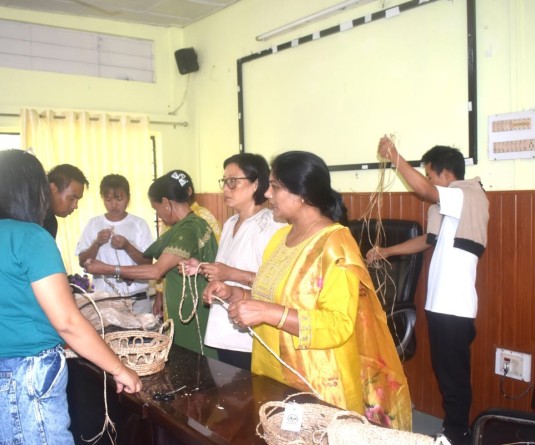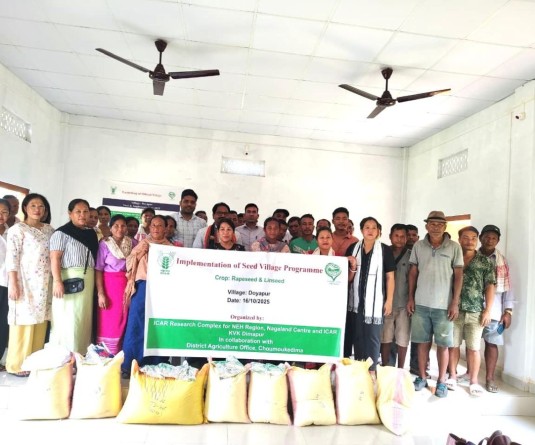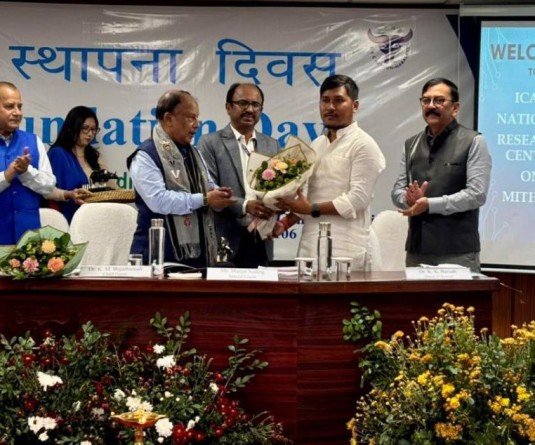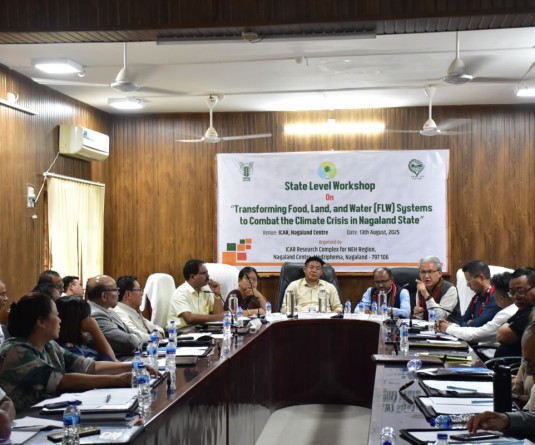Mithun, a bovine species donated by Nagaland CM to ICAR-National Research Centre on Mithun, Nagaland.
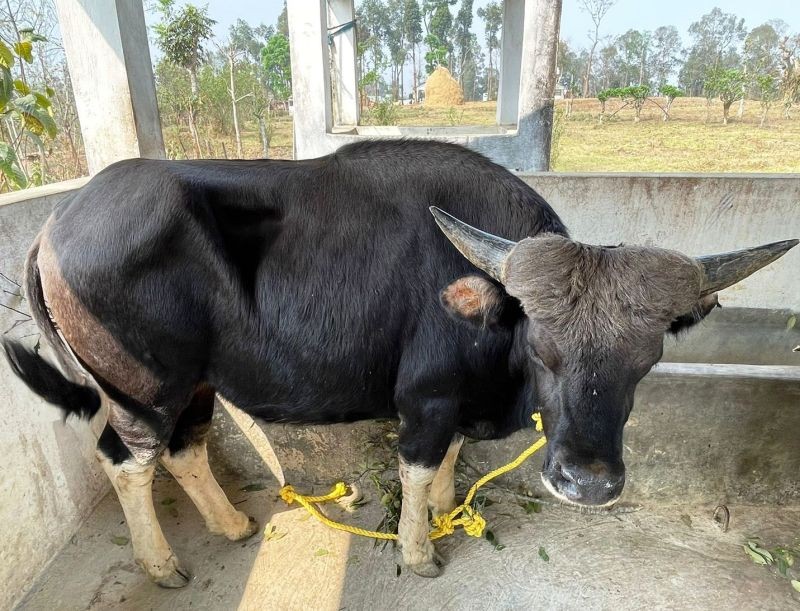
Medziphema, March 29 (MExN): The ICAR-National Research Centre on Mithun, located in Nagaland, has initiated work on organic mithun production.
The Centre secured Organic Conversion Certificate for the fodder plot (75 hectares) at the Porba Station, Phek District, Nagaland, stated a press release from ICAR-NRC on Mithun, Medziphema.
The area covers both fodder plot and the grazing area assigned for the Mithun grazing. The ultimate aim of this initiative is to produce organic Mithun. The Certificate was issued by Sikkim State Organic Certification Agency (SSCOA), it stated.
The process involves using organic manure and compost, as well as abstaining from the use of synthetic pesticides and fertilizers. All the documentation and the practices for organic production required for organic fodder production are followed in the Porba station.
‘This initiative is a part of ICAR- NRC on Mithun’s efforts to promote sustainable and organic farming practices in the region. The Centre aims to promote organic farming practices among farmers in the Northeastern states of India, thereby contributing to the growth of the organic farming sector in the region,’ it added.
CM donates Mithun
The Chief Minister of Nagaland has presented a Mithun, bovine species, to ICAR-National Research Centre on Mithun, Medziphema.
The female Mithun, which is approximately five years old and in its second calving stage, weighs 320 kg and has a black body coat with clean white stockings and a grayish forehead. This Mithun will be a valuable addition to the ICAR-NRC on Mithun’s repository and further its conservation efforts.
In a press release, Dr Girish Patil, S., Director of the Institute expressed appreciation for the gesture.
ICAR-NRC on Mithun in Nagaland is the “only research institution in the world dedicated exclusively to research activities on Mithun.”
The institution’s primary objective is to conserve and propagate this unique species for economic livelihood for many people, particularly in the NE Hill region.


